
Crossed by four rivers and adorned by its cobbled streets, Cuenca is one of the most representative cities, and also the cultural capital of Ecuador.
Tomebamba, Machay, Yanucay and Tarqui Rivers cross Cuenca in different parts of town, filling it with magical little spots where bridges take you from the newest part of town, to the colonial side of it. You can even find the remains of a broken bridge (El Puente Roto), the oldest brigde from colonial times, that reminds us of the passage of time, and shows how the city has evolved and continued to grow, both advancing in time, and maintaining its connection to the past.

THE city with the four rivers
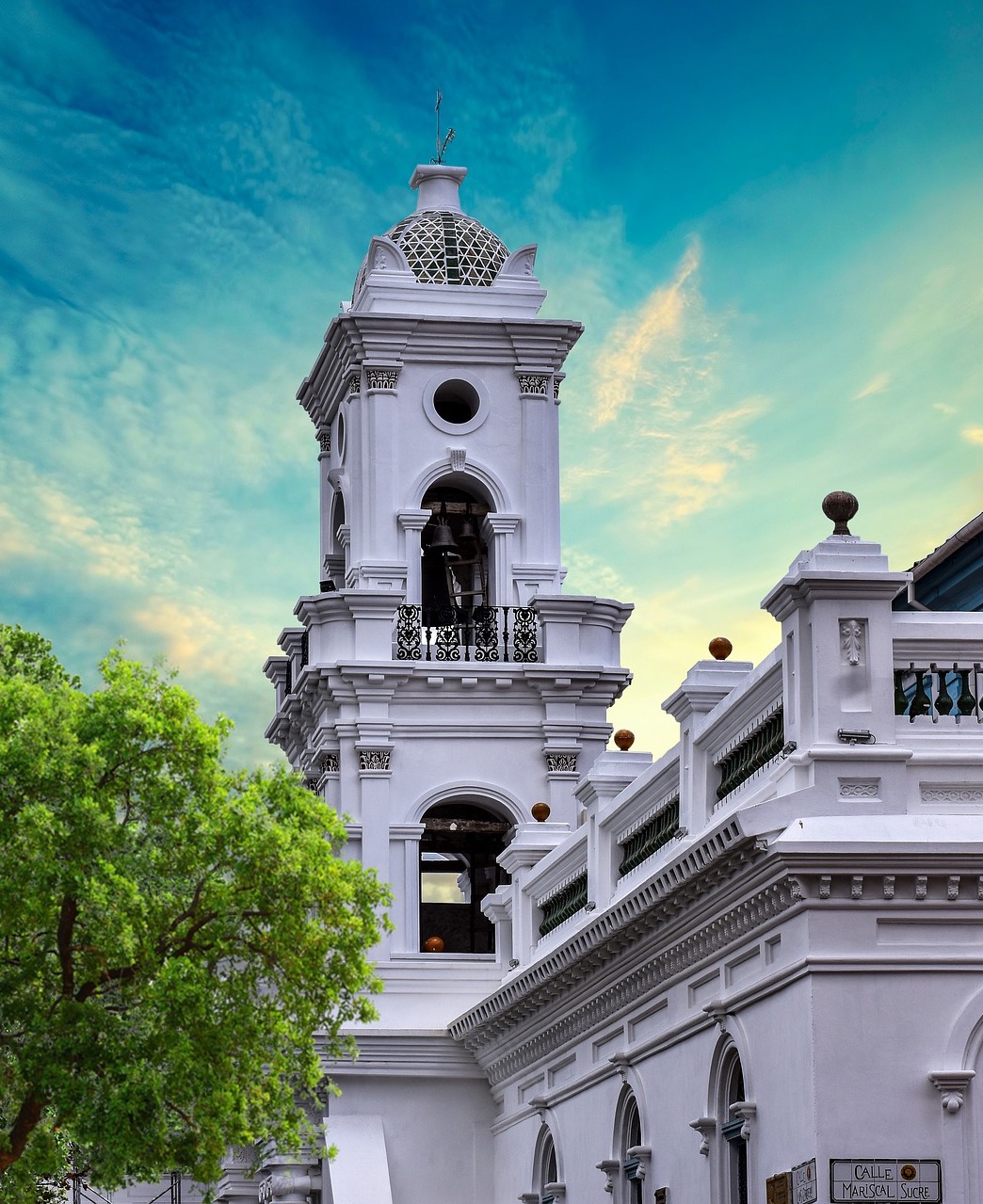
Cuenca, with its narrow streets, beautiful plazas and picturesque cathedrals is a real competitor to the colonial part of Quito. The new Cathedral is one of the most impressing buildings with the flower’s plaza just around the corner, and the famous calle larga not too far away, where you can enjoy the city’s nocturnal and bohemian side.
build your clients trip with our experts

WHAT NOT TO MISS IN cuenca
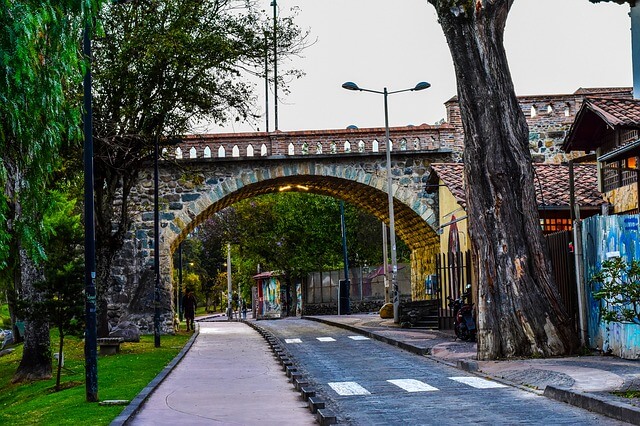
Broken Bridge
Built in the 1800’s and destroyed by a flooding of the river underneath it, this bridge was the most popular place in old Cuenca. Serenades and town meetings took place on it, until it was washed away. But its spirit remains; now, the stone arches shelter art fairs and cultural events.
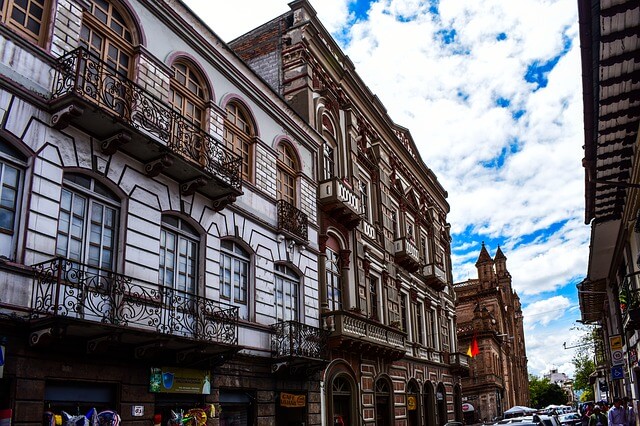
Calle Larga
This is Cuenca’s bohemian and cultural hotspot. Along almost 2 km of a cobbled street, sit some of the most important museums of the city, but also restaurants and bars that cater to every taste, not only in food but in music too. You will find live music shows and the best breweries in town.
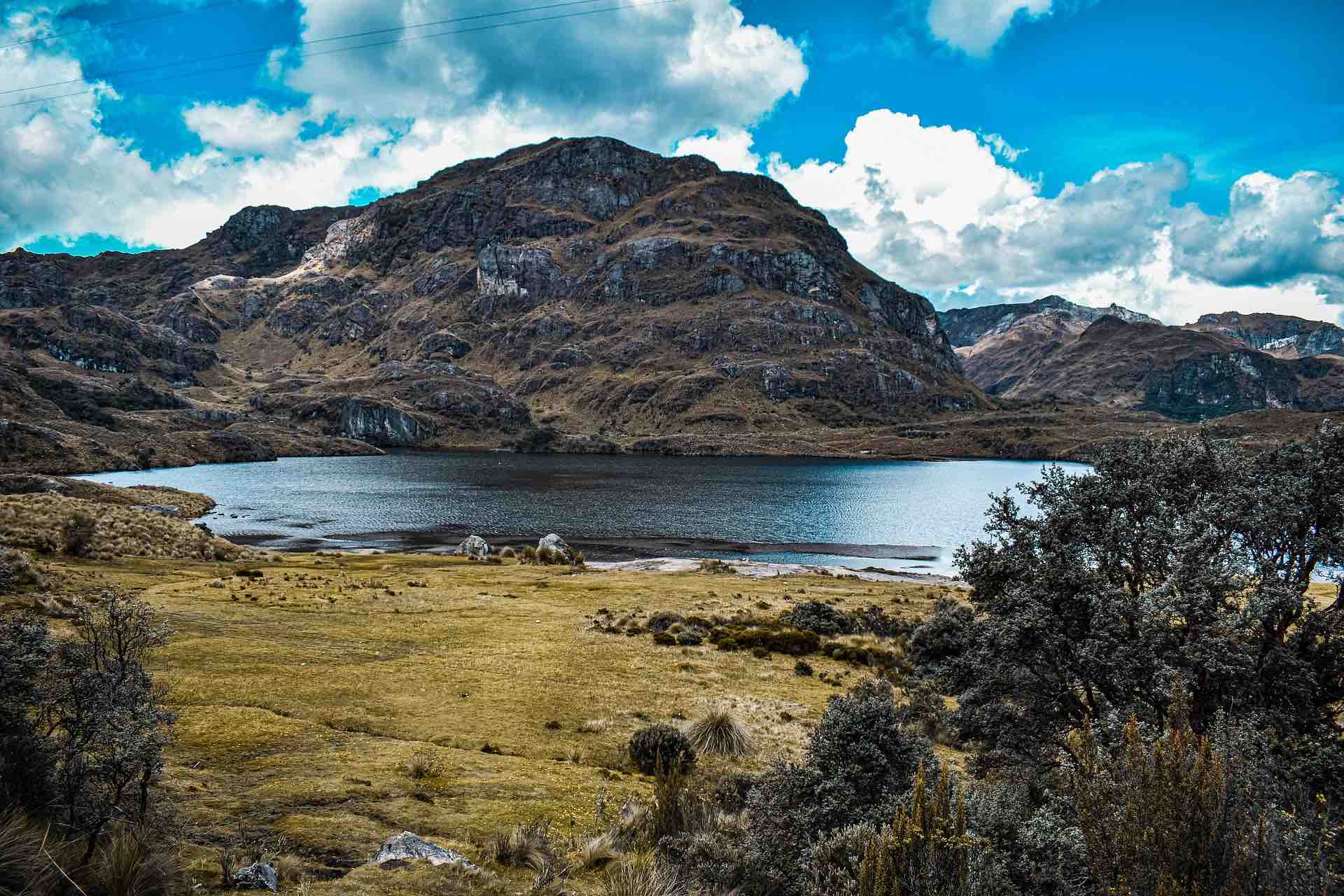
Valle del Cajas
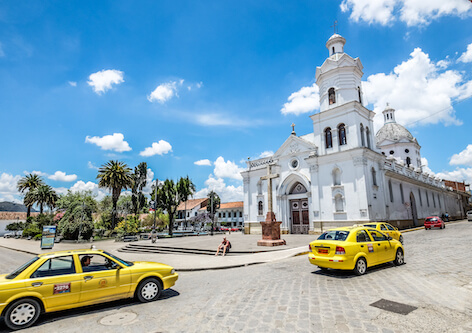
Turi Viewpoint
Turi is a satellite town just 10 minutes from Cuenca. There you will find handcrafts, souvenirs, works of art, but most renowned, the Turi Viepoint, which overlooks the whole city of Cuenca and lets you apreciate all of its architecture and the changes in the city’s distribution from a bird’s point of view. It’s also a good place to get the famous Panama hats (original to Ecuador).
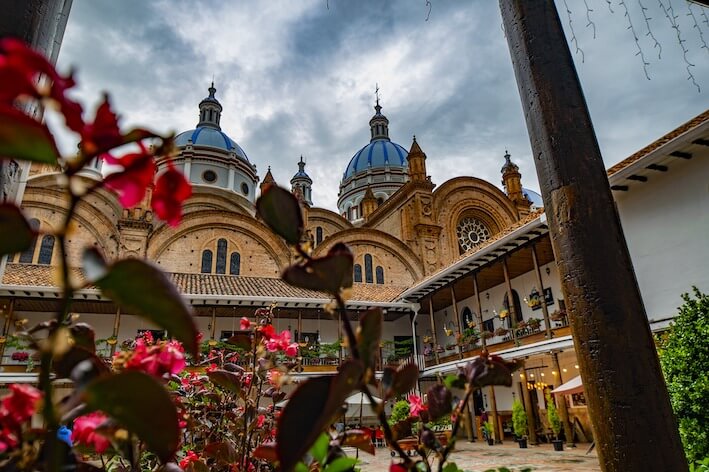
Historical Center
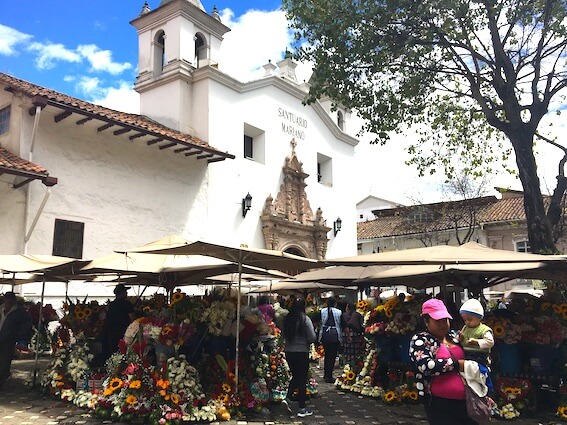
Flower Market
destination map

| Title | Address | Description |
|---|---|---|
Quito | Quito, Ecuador | The country’s capital is an old Andean city. Although it doesn’t maintain much of its Inca origins, it’s still a testimony to Ecuador’s history and the merging of the Spanish and native cultures. Its historic downtown is the largest and best conserved in all of Latin America. Read more… |
Galapagos Islands | Islas Galápagos, Ecuador | The Galapagos Islands are one of the most biologically diverse places on earth. This archipelago of islands is located 972k,m off the coast of Ecuador and perhaps most famous for being the place where Charles Darwin first formulated his revolutionary theory of evolution. Read more… |
Otavalo | Otavalo, Ecuador | Otavalo is probably the most traditional town in Ecuador. Indigenous people showcase their textile production and colorful designs, and on Saturdays it grows exponentially to engulf the streets that surround it with local merchants, musicians and street food vendors. Read more… |
Volcanoes | Soche, Ecuador | Chimborazo is also one of the most iconic mountains in Ecuador, it’s the highest extinct volcano in Ecuador and the closest point to the sun from Earth. Cotopaxi is the highest active volcano in the world, with a perfect conic shape that is recognizable from afar… |
Cuenca | Cuenca, Ecuador | Cuenca, with its narrow streets, beautiful plazas and picturesque cathedrals is a real competitor to the colonial part of Quito. Three rivers cross Cuenca in different parts of town, filling it with magical little spots where bridges take you from the newest part of town, to the colonial side of it.Read more… |
Amazon | Venezuela N6-09 & Mejía. 2nd Floor., Centro histórico Quito - Pichincha - Ecuador, Quito 170401, Ecuador | The Ecuadorian Amazon basin is one of the most biodiverse places in the world, and one of the most beautiful. The Napo River is the Amazon River’s main tributary, home to several un-contacted tribes living nomadic life between the borders of Ecuador, Perú, and Brazil. Read more… |
Cloud Forests of Baños and Mindo | Mindo, Ecuador | Baños & Mindo are natural wonders nestled into the Andes, offering a wide array of activities that go from adventure rafting in the river to relaxing spa days soaking in natural hot springs that get their temperature and medicinal features from the depths of Tungurahua volcano. Read more… |
Pacific Coast | Playa La Bellaca,, Bahía de Caráquez, Ecuador | The coastal region of Ecuador offers a wide variety of options for you to enjoy. From secluded and secret beaches where you’ll be alone to wonder in their beauty, to cities where life is fast, you’ll find fresh seafood and picturesque villages, rich in culture and people proud of their identity. Read more… |
Depending on your client’s preferences, we can help you determine the best experiences tailored for your clients. From where to visit, when to go, what to do and how to get there safely, our travel experts will help you create an experience your clients will love.
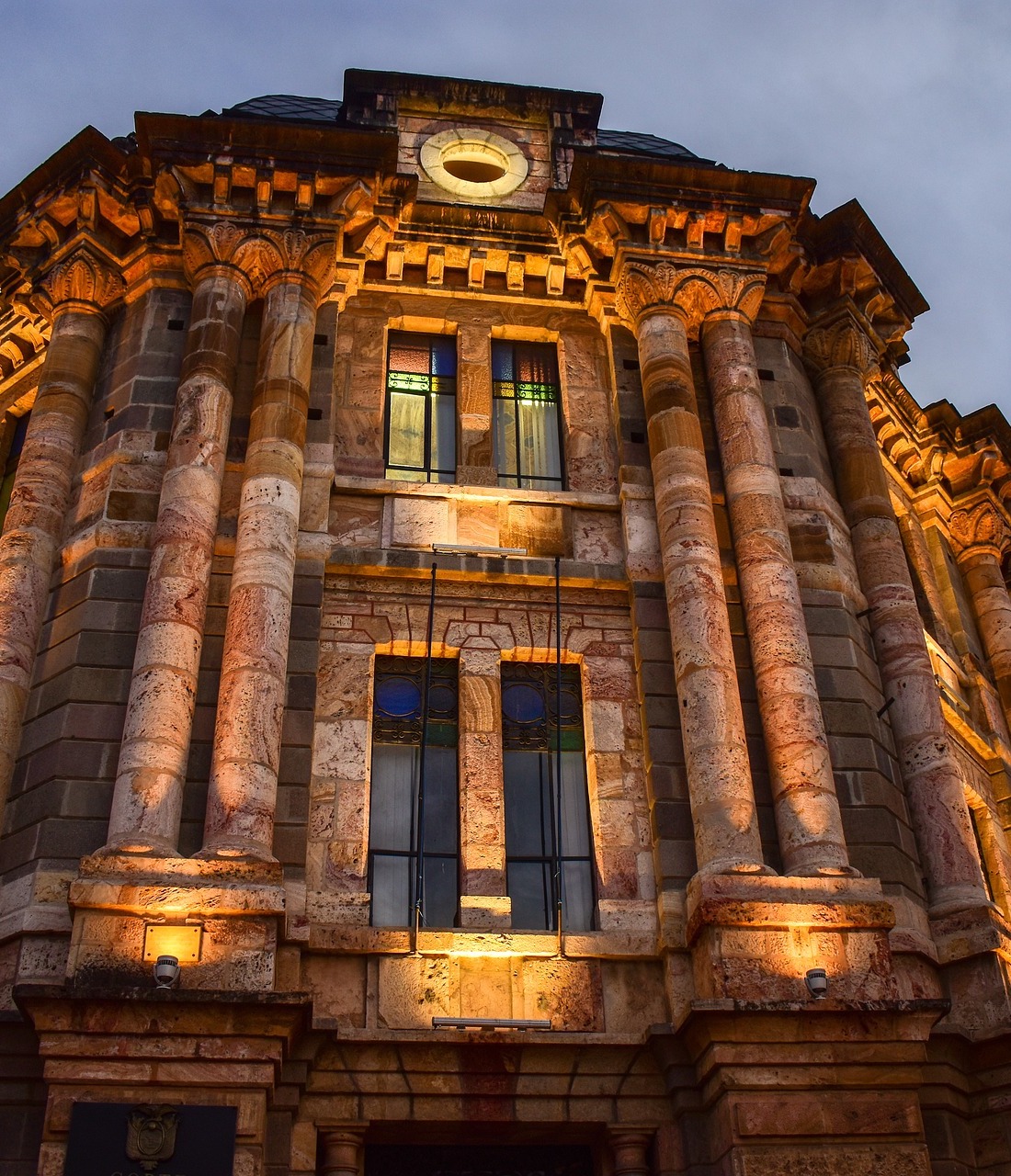
best times to
visit cuenca
With mild temperatures and infrequent rain, Lima is pleasant to visit at any time of the year. To enjoy the numerous beaches, the best time to visit is during the summer months of December to March when the temperature averages between 77ºF – 82ºF (25ºC – 28ºC). In October, Lima’s most important festival, the Lord of the Miracles (Senor de los Milagros), is celebrated with a series of street parades that include a life-size replica of Jesus carried on an elaborate adorned altar.

practical information
HOW TO GET THERE
For air service to Lima, Jorge Chávez International Airport is Peru’s main international and domestic airport. Many airlines in North America, Europe and across Latin America offer direct flights to the capital.
Lima is also connected by bus to several neighbouring countries and all major cities in Peru. While no central bus terminal exists, the multitude of bus companies serving various regions of the country all have their own terminals in downtown Lima or in the suburbs.
GETTING AROUND
For getting around the city, visitors can use public transportation including buses and minibuses. However these methods of transport are only available from 5am to midnight. While there are some services that run through the night, their rates can increase by up to 50% and this collection of old minibuses is not recommended.
There are three types of taxis available in Lima: black limousine service is available at the airport and outside most hotels; radio taxi companies that are requested by phone, and the standard yellow taxis registered with the municipality. It is inadvisable to use independent taxis as they offer no security. Also keep in mind that in Lima there are no taximeters. Fares are settled before boarding except when taking a hotel or radio taxi services.
WHERE TO STAY
Lima has a wide range of places to stay and every type of traveler is sure to find something to their liking. While a number of hotels can be found throughout the city, we recommend staying in Miraflores or Olivos. Both neighborhoods have a great selection of hotels, ranging from super modern to quaint colonial buildings and, from luxury hotels to boutique bed & breakfasts.
The city’s gastronomy also offers a wide range of choices. Many upscale restaurants dot the culinary map of the city and also include plenty cheap meals that make dining out one of the finest aspects of a visit.
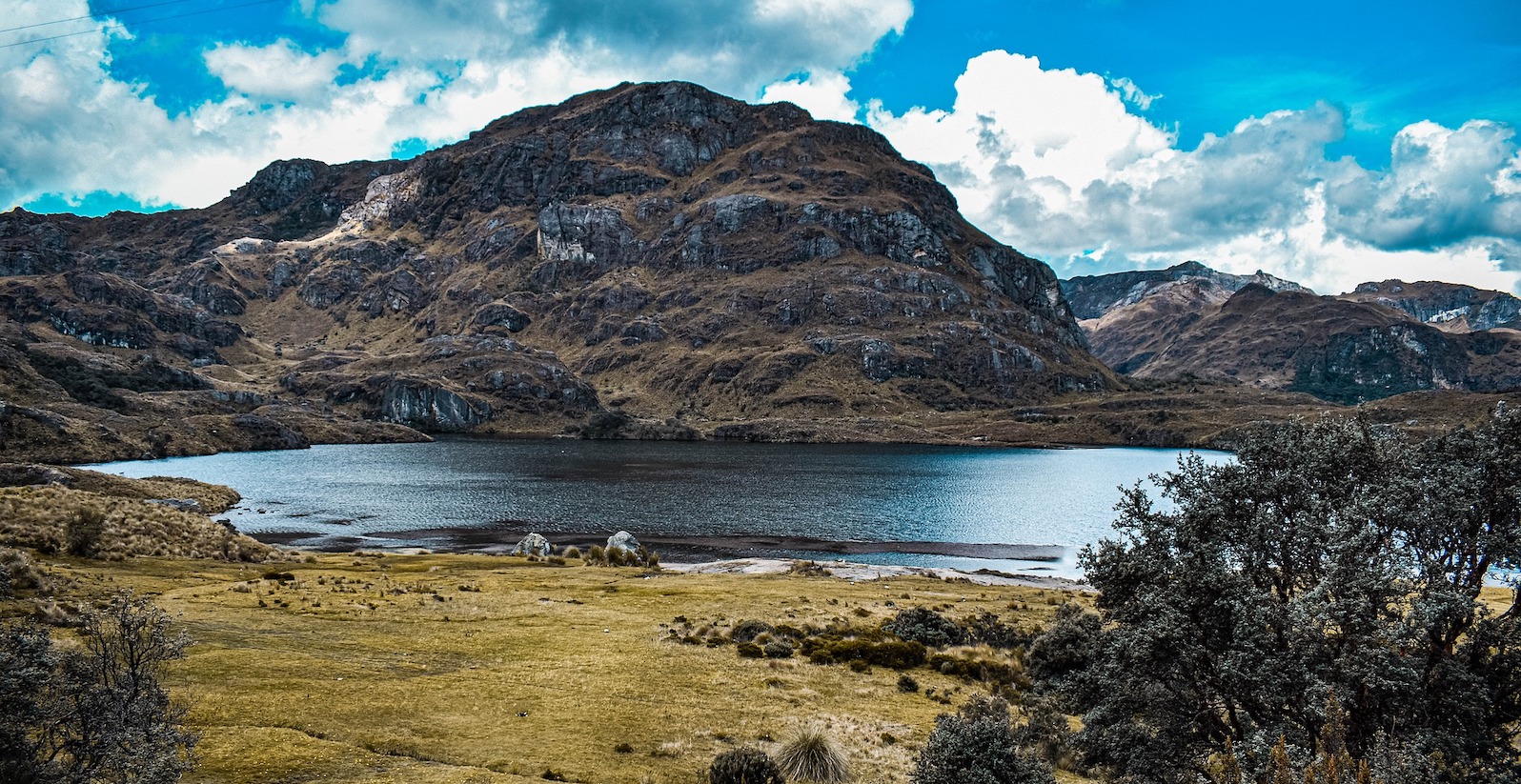
more highlights of ECUADOR
With eight local offices in Latin America, we have the perfect base to help you build the perfect trip for your clients. Unrivaled experience with a wide selection of bed & breakfasts, small posadas, unique boutique hotels and world class luxurious lodging.
